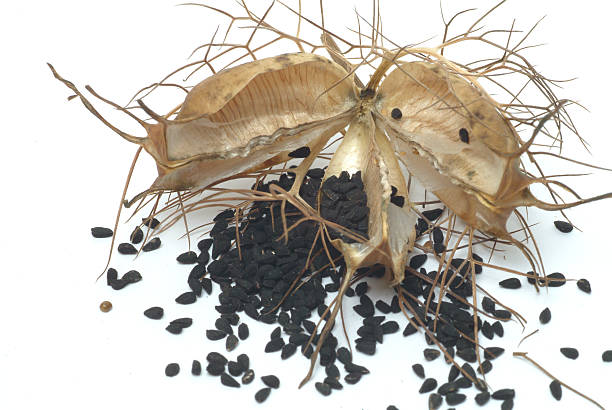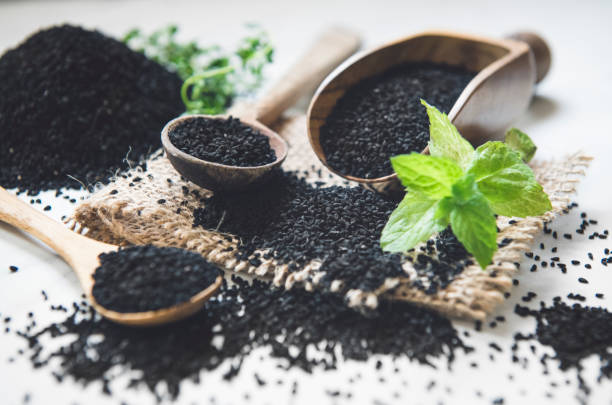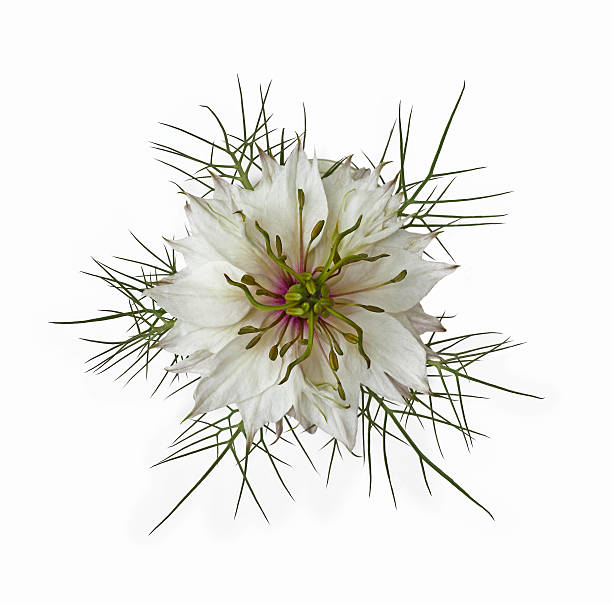
Reference: 00033669-0001


Its very pleasant taste is reminiscent of hazelnut, with a hint of bitterness.
It is used in the making of certain breads, brioches, biscuits, and its oil is a key ingredient in anti-aging products (soap, body oils).
 Delivery
Delivery
Mondial Relay
 Returns
Returns
See conditions
 Payments
Payments
100% secure
Delivered in a resealable bag
 Also known as "black cumin," nigella has a taste somewhat reminiscent of hazelnut with a slight bitterness. In cooking, it is mainly used in bread and brioches. However, it can also be sprinkled on salads or even on certain fish, especially salmon, where its contrasting color is stunning.
Also known as "black cumin," nigella has a taste somewhat reminiscent of hazelnut with a slight bitterness. In cooking, it is mainly used in bread and brioches. However, it can also be sprinkled on salads or even on certain fish, especially salmon, where its contrasting color is stunning.
The small black seeds of nigella have a slightly camphor-like aroma when crushed. For this reason, they are highly valued in the Maghreb, where they are crushed in a sturdy cloth to inhale their scent for treating colds, sinusitis, and bronchitis. They are used both for their medicinal properties and their flavor, as they are also sprinkled on bread.
It is said that nigella cures everything except death! An oil is even extracted from the seeds, boasting numerous benefits and often used in personal care products (soaps, oils, and moisturizing creams).

Origin: Syria
Scientific name: Nigella sativa
Common names: Black cumin, poivrette
 Nigellas (as there are several species) are annual herbaceous plants with finely divided foliage, belonging to the Ranunculaceae family. They grow 40 to 50 cm tall and thrive in sunny, poor, and dry soils. Their delicate flowers, which bloom in early summer, are white for "sativa" and a stunning blue for the variety known as "Damascus." The flowers are followed by large capsules that last for a long time (often used in dried flower arrangements) and contain numerous seeds.
Nigellas (as there are several species) are annual herbaceous plants with finely divided foliage, belonging to the Ranunculaceae family. They grow 40 to 50 cm tall and thrive in sunny, poor, and dry soils. Their delicate flowers, which bloom in early summer, are white for "sativa" and a stunning blue for the variety known as "Damascus." The flowers are followed by large capsules that last for a long time (often used in dried flower arrangements) and contain numerous seeds.
It is essential to distinguish "Nigella sativa," the only edible species, from other nigellas commonly found in gardens, such as Nigella damascena, which are not edible!
Nigella sativa contains over 100 components, giving it properties considered almost miraculous by some! Its power lies primarily in its essential compounds (nigellone and thymoquinone).
°°°
The name nigella comes from the Latin "nigella," derived from "niger," meaning "black," referring to the color of the seeds.
Nigella, like many plants we still consume today, has been cultivated since ancient times.
English and German: Nigella Arabic: Sanoudj
***
Data sheet
 Anne Marie P.
Anne Marie P.
Goit subtil

 Anne Marie P.
Anne Marie P.
Goit subtil

Reference: 00033669-0001
Reference: 2N7072401
Reference: 9N76632004
Brand: Epiciane
Reference: grainesaroussir
Reference: 10M6741201
Reference: 2N7072401
Reference: celerigraines
Reference: 12N7949601
Reference: 11N7892701
Reference: 00033669-0001
Reference: coriandreE
Reference: 20703402
Reference: 9N76632004
Brand: Epiciane
Reference: 20701706
Reference: fenouilE
Reference: 124510
Reference: 11N7754201

Its very pleasant taste is reminiscent of hazelnut, with a hint of bitterness.
It is used in the making of certain breads, brioches, biscuits, and its oil is a key ingredient in anti-aging products (soap, body oils).